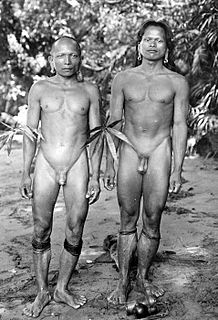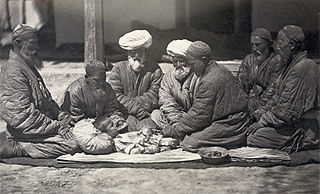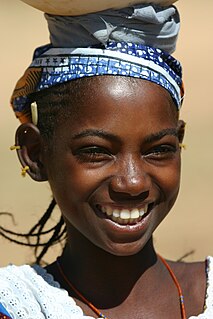
Female genital mutilation (FGM), also known as female genital cutting and female circumcision, is the ritual cutting or removal of some or all of the external female genitalia. The practice is found in Africa, Asia and the Middle East, and within communities from countries in which FGM is common. UNICEF estimated in 2016 that 200 million women living today in 30 countries—27 African countries, Indonesia, Iraqi Kurdistan and Yemen—have undergone the procedures.

The terms genital modification and genital mutilation can refer to permanent or temporary changes to human sex organs. Some forms of genital alteration are performed on adults with their informed consent at their own behest, usually for aesthetic reasons or to enhance stimulation. However, other forms are performed on people who do not give informed consent, including infants or children. Any of these procedures may be considered modifications or mutilations in different cultural contexts and by different groups of people.
Religious male circumcision generally occurs shortly after birth, during childhood or around puberty as part of a rite of passage. Circumcision is most prevalent in the religions of Judaism, Islam, and some Christian denominations such as the Coptic Orthodox Church, the Ethiopian Orthodox Church, and the Eritrean Orthodox Church.
Male circumcision has often been, and remains, the subject of controversy on a number of grounds—religious, ethical, sexual, and medical.
Male circumcision is the surgical removal of the foreskin (prepuce) from the human penis. The ethics of non-therapeutic circumcision being imposed on unconsenting minors has been a source of ongoing controversy.

A girl is a young female human, usually a child or an adolescent. When she becomes an adult, she is described as a woman. The term girl may also be used to mean a young woman, and is sometimes used as a synonym for daughter. Girl may also be a term of endearment used by an adult, usually a woman, to designate adult female friends.

Swaddling is an age-old practice of wrapping infants in blankets or similar cloths so that movement of the limbs is tightly restricted. Swaddling bands were often used to further restrict the infant. Swaddling fell out of favor in the 17th century.

Within the framework of the World Health Organization's (WHO) definition of health as a state of complete physical, mental and social well-being, and not merely the absence of disease or infirmity, reproductive health, or sexual health/hygiene, addresses the reproductive processes, functions and system at all stages of life. UN agencies claim sexual and reproductive health includes physical, as well as psychological well-being vis-a-vis sexuality.

Child abuse or child maltreatment is physical, sexual, and/or psychological maltreatment or neglect of a child or children, especially by a parent or a caregiver. Child abuse may include any act or failure to act by a parent or a caregiver that results in actual or potential harm to a child, and can occur in a child's home, or in the organizations, schools or communities the child interacts with.

Violence against women (VAW), also known as gender-based violence and sexual and gender-based violence (SGBV), are violent acts primarily or exclusively committed against women or girls. Such violence is often considered a form of hate crime, committed against women or girls specifically because they are female, and can take many forms.

Circumcision is the removal of the foreskin from the human penis. In the most common procedure, the foreskin is opened, adhesions are removed, and the foreskin is separated from the glans. After that, a circumcision device may be placed, and then the foreskin is cut off. Topical or locally injected anesthesia is generally used to reduce pain and physiologic stress. The procedure is most often an elective surgery performed on babies and children for religious or cultural reasons. Medically, circumcision is a treatment option for problematic cases of phimosis and balanoposthitis that do not resolve with other treatments, and for chronic urinary tract infections (UTIs). It is contraindicated in cases of certain genital structure abnormalities or poor general health.
Sexual repression is a state in which a person is prevented from expressing their own sexuality. Sexual repression is often linked with feelings of guilt or shame, being associated with sexual impulses. What constitutes sexual repression is subjective and can vary greatly between cultures and moral systems. The ways in which individuals and groups undertake sexual repression can also be diverse in practice as either physical, mental, or both. This topic has been widely researched in varying fields as it is very broad in concept and execution. The history of this phenomenon is unique to societies with varying levels of sexual repression overtime. In modern times there are some countries still considered to exercise strong control over sexuality through legislation and societal pressures.

The status of women in Ghana and their roles in Ghanaian society has changed over the past few decades. There has been a slow increase in the political participation of Ghanaian women throughout history. Women are given equal rights under the Constitution of Ghana, yet disparities in education, employment, and health for women remain prevalent. Additionally, women have much less access to resources than men in Ghana do. Ghanaian women in rural and urban areas face slightly different challenges. Throughout Ghana, female-headed households are increasing.
Khitan or Khatna is the Islamic term for circumcision, carried out as a recommended practice of Islamic culture by Muslims. Male circumcision is widespread in the Muslim world, and accepted as an established practice by all Islamic schools of jurisprudence. It is considered a sign of belonging to the wider Muslim community.

The status and social roles of women in Mali have been formed by the complex interplay of a variety of traditions in ethnic communities, the rise and fall of the great Sahelien states, French colonial rule, independence, urbanisation, and postcolonial conflict and progress. Forming just less than half Mali's population, Malian women have sometimes been the center of matrilineal societies, but have always been crucial to the economic and social structure of this largely rural, agricultural society.

There is a widespread view among practitioners of female genital mutilation (FGM) that it is a religious requirement, although prevalence rates often vary according to geography and ethnic group. There is an ongoing debate about the extent to which the practice's continuation is influenced by custom, social pressure, lack of health-care information, and the position of women in society. The procedures confer no benefits and can lead to serious health problems.
Women in Malaysia receive support from the Malaysian government concerning their rights to advance, to make decisions, to health, education and social welfare, and to the removal of legal obstacles. The Malaysian government has ensured these factors through the establishment of Ministry of National Unity and Social Development in 1997. This was followed by the formation of the Women's Affairs Ministry in 2001 to recognise the roles and contributions of Malaysian women.

Female genital mutilation (FGM), also known as female genital cutting (FGC), is practiced in 30 countries in western, eastern, and north-eastern Africa, in parts of the Middle East and Asia, and within some immigrant communities in Europe, North America and Australia. The WHO defines the practice as "all procedures that involve partial or total removal of the external female genitalia, or other injury to the female genital organs for non-medical reasons."
Female genital mutilation in Sierra Leone is the common practice of removing all or part of the female's genitalia for cultural and religious initiation purposes, or as a custom to prepare them for marriage. Sierra Leone is one of 28 countries in Africa where female genital mutilation (FGM) is known to be practiced.
Female genital mutilation (FGM), also known as Female Genital Cutting (FGC) in Nigeria accounts for the most female genital cutting/mutilation (FGM/C) cases worldwide. The practice is customarily a family tradition that the young female of the age 0-15 would experience. It is a procedure that involves partial or completely removing the external females genitalia or other injury to the female genital organs whenever for non-medical reasons.










